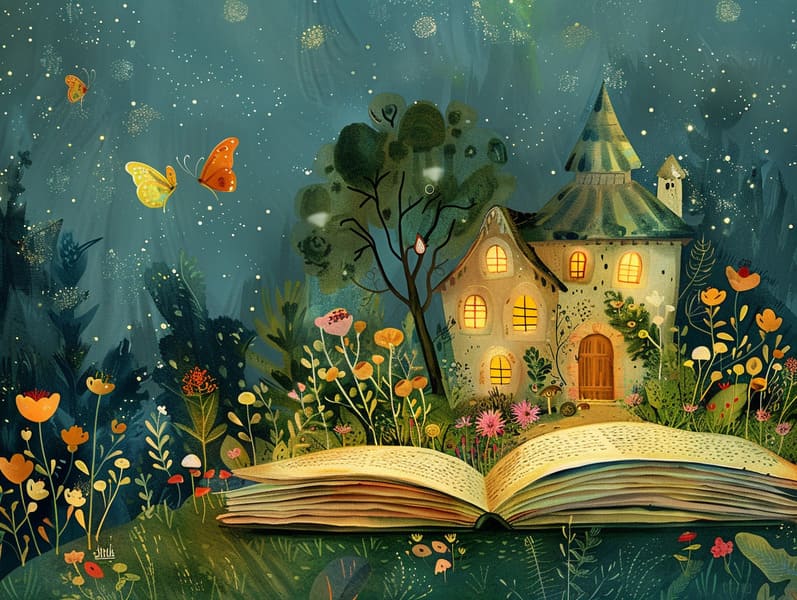The Start of Traditional Fairy Tales with the Unfading Beauty.
The Start of Traditional Fairy Tales with the Unfading Beauty.
Blog Article

Short fairy tales have historical significance. These narratives have been relayed from one generation to the next millennia before they were ever published. They arose from a variety of cultures, including European traditions. They were initially transmitted among grown-ups, often carrying themes and messages related to the societal norms and beliefs of the time.
Jacob and Wilhelm Grimm, Jacob and Wilhelm Grimm, were among the first to collect many of these beloved tales. Their collection, "Grimm's Fairy Tales," included narratives like "The True Bride," "The Story of Hansel and Gretel," and "Schneewittchen," which have since become mainstays in the world of traditional fairy tales. Similarly, Hans Andersen's whimsical narratives, such as "The Story of the Little Mermaid," and "The Ugly Duckling," have won hearts worldwide, securing their place in the pantheon of classic fairy tales.
Though they are old, these tales remain as important as ever, especially as bedtime stories for kids. These charming stories are now available in numerous formats, including richly illustrated books, fantastical animations, and internet fairy tales.
Their lasting appeal can be connected to several delightful features:
Life Lessons: Traditional fairy tales often present important moral lessons. Fairy tales like "The Boy Who Cried Wolf" teach the significance of honesty, while "The Story of the Tortoise and the Hare" emphasize the values of perseverance and meekness. These narratives offer children clear distinctions between correct and incorrect, helping to shape their moral compass in a mild yet deep way.
Compassion and Insight: Traditional fairy tales frequently depict heroes facing difficulties and adversities, stimulating audiences to empathize with their struggles and cheer for their triumphs. For instance, "Beauty's Beast" reveals the importance of seeing beyond the surface to see the true essence of a person, advancing perception and discernment.
Cultural Comprehension: Many ancient fairy tales are infused with the cultural contexts from which they came. Learning from these narratives can provide illuminating insights into different societies, cultivating a sense of global understanding and recognition.
Creativity and Imagination: The fantastical elements in traditional fairy tales—wizardry and magic—spark children’s inventiveness. These tales lead readers to mythical realms, promoting creative ideas and a sense of astonishment that continues a lifetime.
Traditional fairy tales are not only alluring but also pedagogical. They function as whimsical tools in fostering various cognitive and emotional skills in young readers. When classic fairy tales are voiced, they improve language development by presenting new terms and meanings and complex sentence structures. This practice also nurtures auditory skills and mindfulness, as the young hang on every word, enthusiastic to see what happens next.
Furthermore, examining the themes and characters of classic fairy tales can strengthen problem-solving abilities and critical thinking. Little ones check here are taught to pinpoint patterns, foresee events, and comprehend cause and effect. These discussions also benefit young ones utter their thoughts and feelings, promoting their emotional intelligence.
In today’s information age, the abundance of digital storybooks has made these stories more acquirable than ever. Internet resources and software present huge assortments of children's fairy tales that can be seen or listened via anytime, anywhere. Fairy tales voiced are particularly well-liked, featuring an interactive method for young ones to take part in these bewitching tales. Read-aloud stories and read-aloud videos take characters and settings to life, often supported by spellbinding music and music that heighten the narrative journey.
The timeless allure of old fairy tales lies in their ability to evolve to modern society while maintaining their core values. Contemporary adaptations of these fairy tales often highlight more varied figures and modern settings, making them pertinent to today’s audience. However, the core values of valor, generosity, and equity remain unchanged, continuing to influence listeners of all ages.
Fairy tales also offer a sense of peace and predictability. They bring a well-structured narrative with a transparent beginning, middle, and end, often coming to a close with the settlement of conflicts and the triumph of rightness over wrongness. This dependability can be encouraging for kids, providing a sense of unchangeability in an unpredictable world.
Traditional fairy tales continue to enchant and inform new generations, maintaining their loveliness and relevance in modern society. As bedtime stories for kids, they allow a perfect blend of charm and understanding, sustaining moral values, empathy, and creativity. The abundance of online fairy tales and the well-liked nature of fairy tales spoken guarantee that these old tales remain available to new generations.
By safeguarding and passing on these tales, we continue to revere the rich tapestry of tradition and cultural heritage. Whether you are seeing a colorful picture book, enjoying a digital collection, or listening via an audio story, the magic of ancient fairy tales is always within reach. These fairy tales point out of the eternal essence of fairy tales and its ability to unite us across epochs and places.
Even if you are experiencing a gorgeously illustrated book, browsing a virtual collection, or listening to an sound book, the appeal of bedtime fairy tales is always within reach.
These fairy tales reveal of the ageless magic of stories and its ability to bond us across centuries and lands, forging a link that captivates and teaches alike.